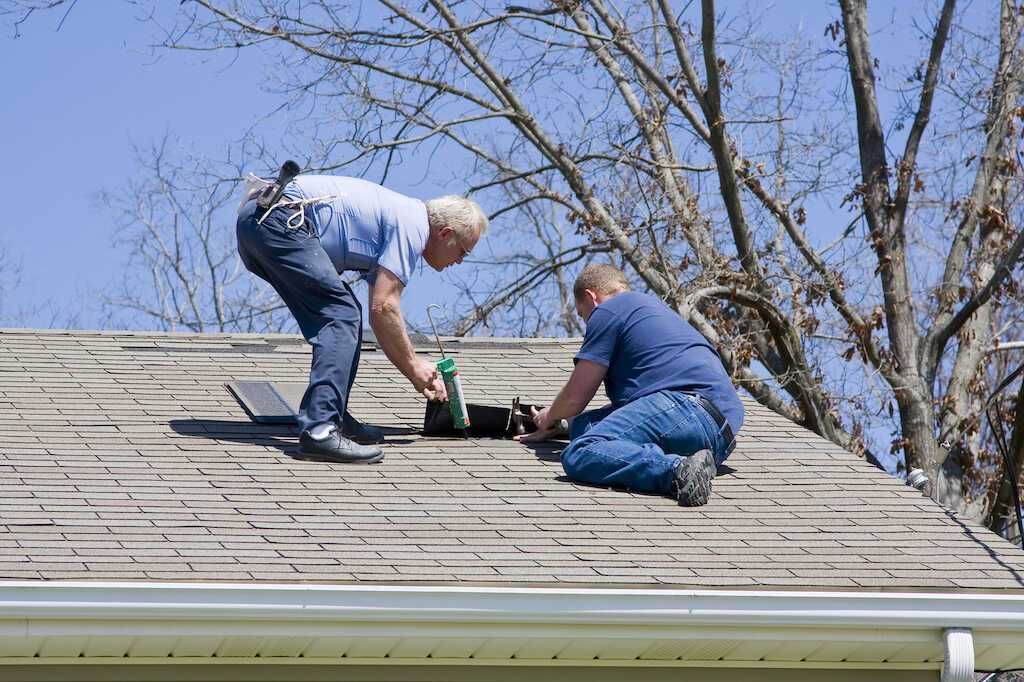Roofs are under attack! Nearly 160,000 roofers work in the United States, and many of them spend their days repairing holes in people’s roofs.
You should expect to experience roof leaks at some point. Though you should get help from a roofer, you need to take the initiative so your home doesn’t get damaged. The key is to know what to do as soon as a leak occurs.
What should your first steps be when your roof is leaking? How can you seal a leak inside your home? What should you do to fix your roof?
Answer these questions and you can take control of your leaky roof in no time. Here is your quick guide.
Find Where the Roof Leaks Are
There are many reasons for roof leaks. If your roof starts leaking, try not to worry about what is causing the roof leak. Focus on where the water is coming in from.
Take a look at your roof and see if you can notice any visible damage. If it’s safe to go inside your house, go inside and enter the room where most of the water is. See if you notice a hole, crack, or gap in your ceiling or wall.
If you cannot locate the leak or if you have multiple leaks, you should hire a roofing company. An inspector can go on your roof and find the hole or holes. They can then install shingles and seal the leaks with other materials.
Remove Your Valuables
As soon as you notice water damage, you need to take items out of the room. Prioritize items that the water will destroy almost immediately, like papers and electronics. You can use a pair of gloves to handle these materials, as dropping them will damage them further.
If it is safe to do so, you should try removing wooden objects. Water can cause wood to rot and wear down, and the glue connecting parts together can get damaged.
If you take out anything that is wet, you should leave it outside to air dry. You can hang up your items on clotheslines or dangle them from tree branches. Do not return them to your house until they have dried completely and you have cleaned them.
To prevent the leak from spreading to other rooms, you should seal the room. At a minimum, you should place towels around the door leading into the room. You can also place weather strips around the doors and windows near the flooded room.
Six inches of moving water can knock you over, even if you are wearing boots. If a torrent of water is coming through your roof, you should evacuate your home instead of trying to salvage objects.
Hang Up Plastic Sheets
If you’re struggling to find the source for your leak, you should use polyethylene (PE) plastic. You can place sheets on the ceiling or against walls, and you can wrap them around doors and windows.
Estimate how big the leaking area is. Make sure your sheet is at least three feet bigger so it can expand and catch all of the water entering your home.
Stretch the plastic as thin and tight as possible and then use staples to secure it in place. If it starts to sag, you should use nails as well. You can also hang up two sheets at once so the plastic doesn’t tear.
Redirect the Leaking Water
If your plastic sheets are not working, you can use a funnel to redirect your water. Find an empty jug, barrel, or large bottle. It should have a wide opening on one end and a bottleneck on the opposite end.
Grab a hose that is long enough to reach from the leak to the nearest exit. Attach one end of the house to the bottleneck of your funnel and place the wide end right over the leak. You can use duct tape in order to do this.
You can now place the other end of your hose outside your home. The water should start flowing out of your house. Make sure the water falls away from your home and doesn’t pool on a patio or another structure.
Install New Roofing Materials
You should always install new materials after a leak. Water and falling debris can damage parts of your roof. If you or your roofer notice any signs of roof damage, you should remove and replace the materials.
You should also consider installing new shingles. If many of your old shingles broke, you can get a roof replacement with a stronger material. Metallic roofs may leak less than tile or shingle roofs.
You can replace some shingles yourself. Wear safety gloves and rubber boots. Go to the areas where your shingles are damaged and use a straight edge to remove them.
Then use roofing tar and nails to secure your new shingles in place. They should be identical versions of your old shingles. If you install new shingles of a different size or shape than your old ones, they may fall off your roof.
While you are installing new materials, you should remove any debris that has fallen on your roof. This includes leaves and sticks, as they scrape your shingles and damage your roof tar.
Take Action Once Your Roof Leaks
When your roof leaks, you need to move quickly. Figure out where the leak is by looking at your roof and the room where the water is. Remove fragile and valuable items and use plastic to cover up the hole.
You can redirect the water using hoses and funnels. Once the emergency has passed, you need to repair your roof. Replace any damaged tiles and remove any fallen debris, then call a roofing contractor to get further support.
Do not hesitate with a broken roof over your head. Amenity Roofing serves the Montgomery area. Contact us today.

